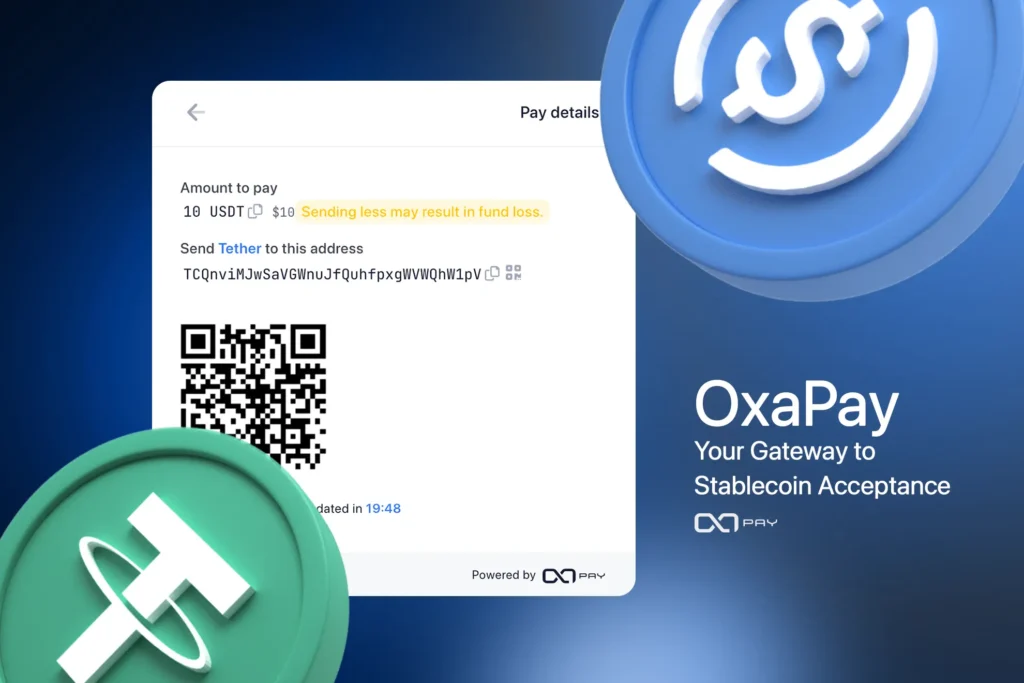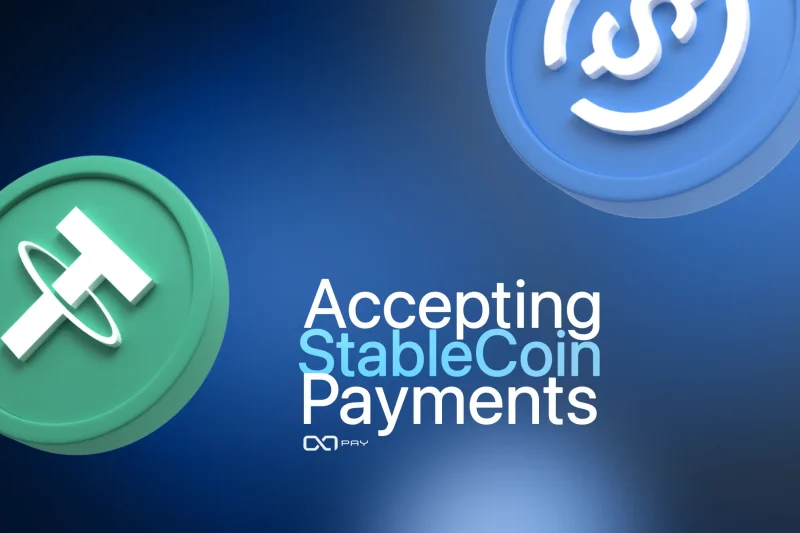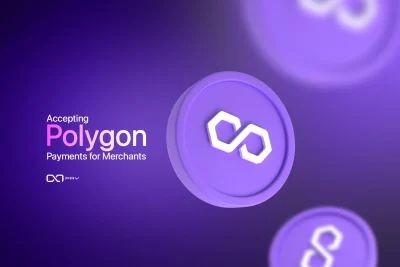Adoption of innovation in the payment industry is not just an option; it’s a necessity. As businesses navigate through the dynamic world of cryptocurrencies, one term that has gained significant traction is stablecoins. But what exactly are stablecoins, and why should merchants consider accepting stablecoin payments?
Understanding Stablecoins: Stability in crypto payments
Stablecoins have emerged as a reliable bridge between traditional currencies and the volatile realm of cryptocurrencies. Unlike their more unpredictable counterparts like Bitcoin or Ethereum, stablecoins are pegged to real-world assets, ensuring a steady value. But why were stablecoins created, and how do they differ from other cryptocurrencies?
The Genesis of Stability
Stablecoins were conceived to address the inherent volatility of cryptocurrencies. Created with the intention of providing a more stable value proposition, they offer a safer haven for businesses looking to integrate digital currencies into their payment systems. This section delves into the origins of stablecoins and the problems they aimed to solve.
Advantages of Stablecoins: A Game-Changer for Business Transactions
Stablecoins, while retaining the advantages of cryptocurrencies in payment, such as decentralized transactions and borderless accessibility, introduce a transformative element to business transactions by mitigating the challenges posed by rapid value fluctuations. Serving as a catalyst for innovation, accepting stablecoin payments offers a stable foundation that optimizes financial operations by reducing transaction costs, a critical factor for businesses where every penny counts.
Furthermore, they act as a reliable shield against currency risks, mitigating uncertainties inherent in the volatile nature of other digital assets. Despite maintaining the advantageous aspects of cryptocurrencies, accepting stablecoin payments carves a strategic path toward stability, making them an attractive and dependable medium of exchange for businesses in the evolving digital payment landscape.
Types of Stablecoins and Their Advantages/Disadvantages
Stablecoins come in various types, each with its unique collateral structure, catering to different needs within the financial ecosystem. Let’s explore the four primary types of stablecoins and delve into the advantages and disadvantages associated with each.
1. Fiat-backed Stablecoins: Stability with Centralization
Advantages:
- Stability: Fiat-backed stablecoins like Tether (USDT) and USD Coin (USDC) are anchored to traditional fiat currencies, providing a high level of stability.
- Widespread Use: These stablecoins are widely accepted and commonly used, making them accessible for various financial applications.
Disadvantages:
- Centralization: Relying on fiat currency reserves means a centralized authority is in control, potentially introducing vulnerabilities and dependencies.
2. Crypto-backed Stablecoins: Decentralization with Market Susceptibility
Advantages:
- Decentralization: Crypto-backed stablecoins, such as DAI, offer a more decentralized approach, reducing reliance on traditional financial systems.
- Blockchain Flexibility: These stablecoins leverage blockchain technology, allowing for greater flexibility and interoperability.
Disadvantages:
- Market Susceptibility: The value of crypto-backed stablecoins is tied to the volatility of the underlying cryptocurrencies, making them susceptible to market fluctuations.
3. Commodity-backed Stablecoins: Tangible Collateral with Valuation Challenges
Advantages:
- Tangible Asset: Commodity-backed stablecoins, like Paxos Gold (PAXG), provide the stability of a physical commodity, offering a sense of security.
- Diversification: Collateralizing stablecoins with commodities introduces diversification benefits.
Disadvantages:
- Valuation Challenges: Determining the accurate value of the underlying commodity can pose challenges, affecting the stability of the stablecoin.
4. Algorithmic Stablecoins: Decentralized Autonomy with Complexity
Advantages:
- Decentralized Control: Algorithmic stablecoins, exemplified by Ampleforth (AMPL), operate without traditional collateral, providing a decentralized and autonomous approach.
- Potential for Autonomy: Smart contracts and algorithms manage supply and demand, potentially offering more autonomy.
Disadvantages:
- Complex Management: The reliance on complex algorithms introduces management complexities, making algorithmic stablecoins less straightforward to operate.
- Less Predictability: The pricing behavior of algorithmic stablecoins may be less predictable compared to fiat-backed stablecoins.
Choosing the Right Stablecoin: Tailoring to Specific Use Cases
The selection of a stablecoin hinges on the specific use case and risk tolerance of businesses and individuals. For those prioritizing stability in everyday transactions, fiat-backed stablecoins prove advantageous. Meanwhile, for more sophisticated trading or decentralized applications, crypto-backed or algorithmic stablecoins may offer greater flexibility, albeit with a higher degree of complexity. Understanding the unique characteristics of each type empowers users to make informed decisions in navigating the dynamic landscape of stablecoin adoption.

OxaPay – Your Gateway to Stablecoin Acceptance
OxaPay a cutting-edge crypto payment gateway designed to simplify and enhance the acceptance of stablecoin payments. This crypto payment gateway serves as the bridge between traditional commerce and the dynamic world of cryptocurrencies, offering a user-friendly and secure platform for businesses to thrive in the digital payment ecosystem.
Seamless and Easy Integration
OxaPay prioritizes a seamless integration experience for merchants, recognizing that a smooth transition is paramount for widespread adoption. The platform offers step-by-step guidance, ensuring that businesses can effortlessly incorporate stablecoin payments into their existing systems. OxaPay’s intuitive design and user-friendly interfaces make the integration process straightforward, minimizing disruptions to daily operations. Whether a business is new to digital payments or seeking to enhance its existing capabilities, OxaPay streamlines the journey towards stablecoin acceptance with a focus on simplicity and ease of use.
Wide Support for Stablecoins in Different Networks
OxaPay’s versatility lets merchants choose stablecoins aligning with preferences and business goals. By supporting a a broad range of stablecoins,OxaPay empowers businesses to serve a diverse customer base and capitalize on stablecoin benefits, positioning it as a comprehensive solution for seamless adoption.
OxaPay goes beyond just facilitating stablecoin transactions; it provides a holistic suite of features to cater to the diverse needs of businesses:
- Various Payment Solutions: OxaPay understands that businesses have unique requirements. Hence, the platform offers a variety of payment solutions, allowing merchants to tailor their approach to accepting stablecoins based on their industry, size, and customer preferences.
- Advanced Security: Security is paramount in the digital payment landscape. OxaPay employs advanced encryption and authentication measures to ensure the utmost security for every transaction. Merchants and customers can trust that their sensitive information is safeguarded.
- Low and Transparent Costs: OxaPay prides itself on offering low and transparent costs for stablecoin transactions. By providing clarity on fees, businesses can budget effectively and make informed decisions regarding their payment processes.
- Scalability: As businesses grow, so do their payment needs. OxaPay is designed with scalability in mind, accommodating the increasing transaction volumes and demands of a growing enterprise.
- Technical Customer Support: Recognizing the importance of technical assistance, OxaPay provides robust customer support services. Technical experts are readily available to guide merchants through any challenges, ensuring a smooth and efficient stablecoin payment experience.
Conclusion: A Stable Future for Business Transactions
Adopting stablecoin payments with OxaPay is a strategic move towards stability and reliability in the crypto payment landscape. Understanding stablecoin origins, advantages, and integration processes positions merchants at the forefront of the evolving payment industry. OxaPay serves not just as a stablecoin integrator but as a comprehensive solution, offering diverse payment solutions, advanced security, and scalable infrastructure. Portrayed as a dedicated partner, OxaPay empowers businesses on their journey towards stability and innovation in the dynamic world of digital transactions.



 (7 votes, average: 3.86 out of 5)
(7 votes, average: 3.86 out of 5)


